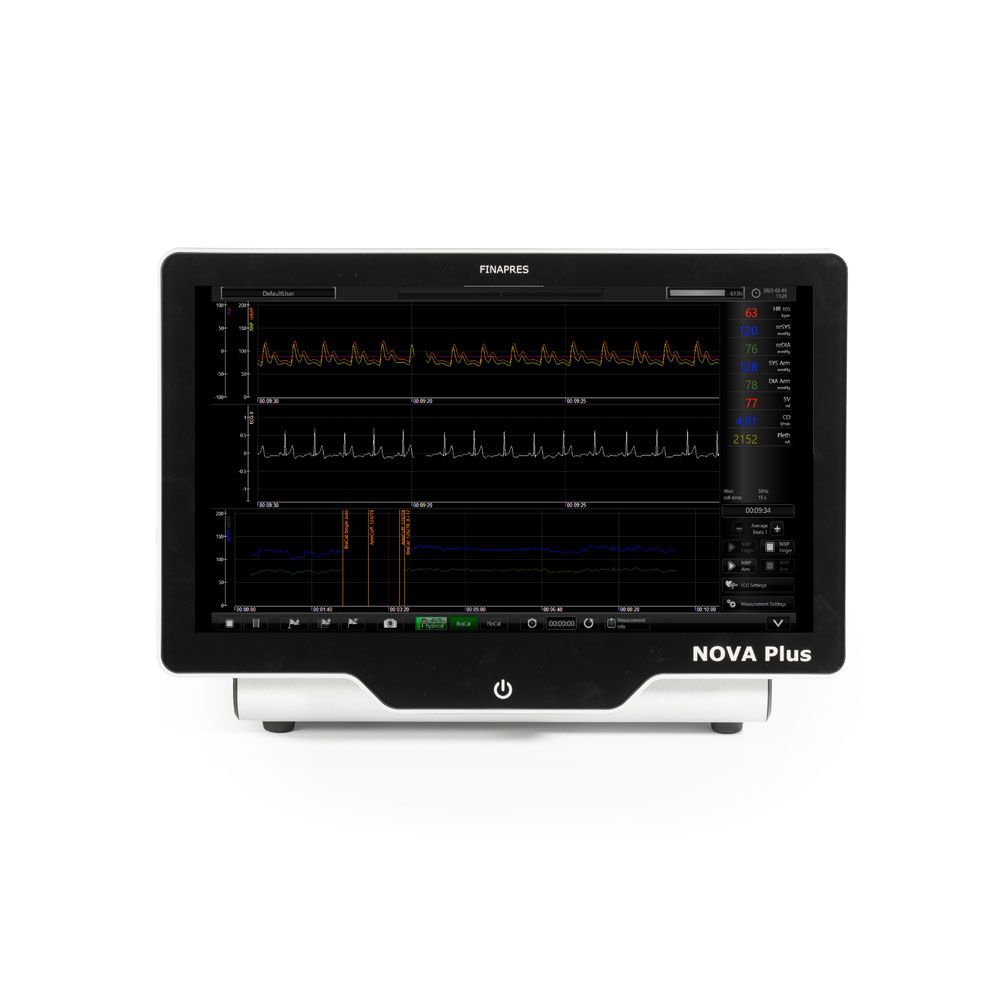Cardiovascular Autonomic Testing Revisited: a Webinar about Syncope Pathophysiology & Cardiovascular Dysautonomia
Date: 25th July 2021
Reading time: 5 mins

What is Syncope?
Syncope is a transient loss of consciousness (TLOC), due to transient global cerebral hypoperfusion, characterized by rapid onset, short duration and spontaneous complete recovery. [1] Syncope is a common presentation in clinical practice: 1–2% of all Emergency Department visits are due to syncope, while 30-40% of the population will faint at least once in their lifetime [2].
“Cardiovascular Autonomic Testing Revisited”: a Webinar about Syncope Pathophysiology & Cardiovascular Dysautonomia
On the 10th of September 2020, Finapres Medical Systems sponsored this live webinar “Cardiovascular Autonomic Testing Revisited”. In this webinar, Dr. Fedorowski explained the physiology of syncope and orthostatic intolerance. He discussed the current guidelines about the syncope diagnosis and gave advices on the practical skills required to perform a successful cardiovascular and autonomic workup.
This blog will further highlight some topics discussed in the webinar.
Cardiac & Vascular Autonomic Dysfunction
There are two major types of cardiovascular autonomic dysfunction:
1. the cardiac i.e. “pump” dysfunction
2. the vascular i.e. “pipeline” dysfunction
These types of dysfunction may overlap, combine and convert to each other over the life span. For instance, patients with arterial hypertension may have orthostatic and postprandial hypotension, and reduced heart variability, while younger individuals may suffer from both Postural Orthostatic Tachycardia Syndrome (POTS) and Vasovagal Syncope (VVS).
The figure below, obtained from [3], presents the spectrum of cardiovascular dysautonomias. The red colour refers to the hyperadrenergic conditions (sympathetic dominance), while the blue colour refers to the hypoadrenergic conditions (parasympathetic dominance).

Cardiovascular Autonomic Function Tests
This figure below presents the diagnostic strategy for unexplained syncope as described in the 2018 ESC guidelines for Syncope Diagnosis and Management [1]. When a cardiac origin is unlikely and recurrent episodes occur, cardiovascular autonomic function tests are recommended.

Cardiovascular Autonomic Function Tests
This figure below presents the diagnostic strategy for unexplained syncope as described in the 2018 ESC guidelines for Syncope Diagnosis and Management [1]. When a cardiac origin is unlikely and recurrent episodes occur, cardiovascular autonomic function tests are recommended.
Cardiovascular Autonomic Tests in Practice
In the webinar, dr. Fedorowski described multiple cases of patients with unexplained syncope or POTS and the results of their autonomic function tests. Two examples are shown in the following images. For more information on these cases and more examples, watch the webinar here!

Example of beat-to-beat blood pressure and ECG monitoring during a head-up tilt test in a woman with unexplained syncope.

Examples of beat-to-beat blood pressure and ECG monitoring during a deep breathing test in 2 women with POTS.
Cardiovascular Autonomic Testing in the Diagnosis of Syncope
In the “Cardiovascular Autonomic Testing Revisited” webinar, it is concluded that:
- Cardiovascular (CV) autonomic testing is crucial for the diagnosis of unexplained syncope, as it may potentially identify up to 70% of the syncope aetiologies
- CV autonomic testing is important for the diagnosis of CV dysautonomia, orthostatic hypotension, POTS, IST, chronotropic incompetence and other dysautonomic conditions
- CV autonomic testing should be performed by trained staff with access to autonomic laboratory and prolonged CV monitoring methods.
Autonomic Test Maneuvers with Finapres® Guided Autonomic Testing (GAT)
Finapres® Guided Autonomic Testing (GAT) application, guides the operator and the patient through a series of autonomic test maneuvers. The GAT application consists of a graphical user interface on the Finapres® NOVA and includes a tablet. The tablet provides instructions for the patient during the tests and has the ability to record a video during the test. Upon completion of the test, the application generates a PDF report with quantified results of all performed tests. Together, all these features support standardization and quantification of your autonomic tests!
The GAT application facilitates the following tests:
- Valsalva test
- Tilt Table test
- Deep Breathing test
- Stand test
- Cold Pressor test
- Carotid Sinus Massage test
- Drugs Administration test

Tilt table testing with Finapres® Guided Autonomic Testing (GAT) software application
Learn more about Finapres solutions at www.finapres.com or get a request for quote for more information!
More questions? Contact us!
References
[1] Brignole M. et al. “2018 ESC Guidelines for Diagnosis and Management of Syncope.” European Heart Journal (2018)
[2] Shen, Win K., et al. “Syncope Evaluation in the Emergency Department Study (SEEDS) A Multidisciplinary Approach to Syncope Management.” Circulation (2004)
[3] Feigofsky, S., and A. Fedorowski. “Defining Cardiac Dysautonomia–Different Types, Overlap Syndromes; Case-based Presentations.” Journal of Atrial Fibrillation (2020)




